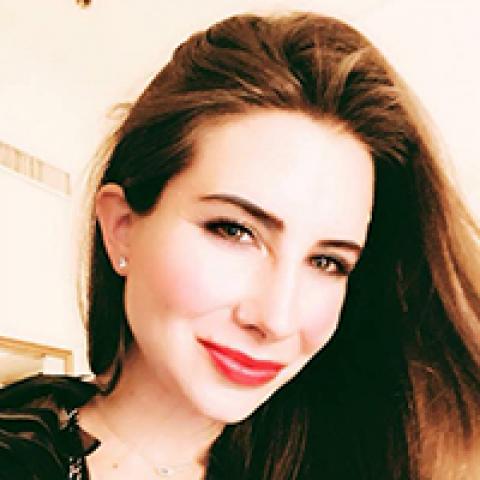JEDDAH — Saudi Arabia made history last month with the staging of the first-ever Islamic Arts Biennale. Prominent artists, collectors and art specialists from the Middle East and international art scenes gathered under the expansive, tent-like canopies of the iconic Western Hajj Terminal at the King Abdulaziz International Airport in Jeddah for the inauguration — the same place that pilgrims from around the world gather to attend hajj, their pilgrimage to Mecca.
The exhibition (January 23-April 23), displays over 280 works of Islamic historical objects — including 239 from Saudi Arabia and 15 that have never been exhibited before — within an 80,000-square-meter space alongside 60 new commissioned works of contemporary art by 42 international artists and collectives, among which 18 are from Saudi Arabia. The exhibition brings Islamic art home to the birthplace of Islam. Its staging in Jeddah, close to Mecca, is also synonymous with its theme, “Awwal Bait," which means “first house” in Arabic. The theme evokes the symbolic unity of the Holy Kaaba, the building at the center of the Masjid al-Haram in Mecca, Islam’s most important mosque.
Summaya Vally, a South African architect and artistic director of the biennale, curated the exhibition alongside a host of specialists, including prominent Saudi scholar and archaeologist Saad Alrashid; Omniya Abdel Barr, an Egyptian architect and Barakat Trust Fellow at the V&A; and Julian Raby, director emeritus of the National Museum of Asian Art at the Smithsonian Institution in Washington.
The Islamic Arts Biennale is historical in many ways. “It is a temporary home, an entirely new physical setting in this context of the Muslim pilgrim’s journey, in which to invite artists and audiences to reflect on ritual, the sacred, the personal and the communal,” said Vally in a statement. She stressed to Al-Monitor how Islamic art has rarely been displayed on such a global platform. The last major exhibition of Islamic art was held in 1976 in London. The Islamic Arts Biennale, she says, sheds light on Islamic art and culture from the “Muslim perspective from our part of the world.”
Symbolic of Saudi Arabia’s culture drive
Staged by the Diriyah Biennale Foundation (DBF), an entity set up in 2020 by the Saudi Ministry of Culture to produce Saudi Arabia’s first art biennale, the Islamic Arts Biennale marks the second biennale produced by DBF, with the first being the Diriyah Contemporary Art Biennale that opened in December 2021 in the JAX district of Riyadh. Both biennales are groundbreaking for the kingdom. Prior to 2016 — the year Crown Prince and Prime Minister Mohammed bin Salman announced his ambitious reform agenda, Vision 2030, to diversify the economy, wean its reliance on oil and foster what has been dubbed a creative economy for the kingdom — there were hardly any state-funded cultural events.

The Islamic Arts Biennale at King Abdulaziz International Airport, Jeddah, Saudi Arabia. (Photograph by Marco Cappelletti, Courtesy of OMA)
In November 2021, the Ministry of Culture announced over 100 cultural events and initiatives led by 25 new cultural organizations before the end of the year. 2022 further exemplified the breakneck pace of the kingdom’s cultural mission, with the announcement of new museums and cultural centers such as the Fenaa Alawwal, which opened in December 2022 in Riyadh at the former headquarters of Saudi Arabia’s first commercial bank.
Moreover, the Islamic Arts Biennale, like other art events being staged in the kingdom, focuses largely on the incorporation and commemoration of local Saudi culture within a contemporary framework. In this case, Islam fused with Saudi culture and heritage becomes a unifying factor throughout the exhibition.
“The Diriyah Biennale Foundation’s mission in establishing the first Islamic Arts Biennale, is to celebrate and enrich the cultural and artistic exchange between Saudi Arabia, the birthplace of Islam, and communities from around the world,” Islamic Arts Biennale director Farida Alhusseini tells Al-Monitor.
The purpose of the biennale, she adds, is to go beyond the mere display of Islamic art and artifacts to emphasize cross-cultural dialogue between Saudi Arabia and the rest of the world — a mission of the kingdom under Vision 2030 stating that culture is “indispensable to our quality of life.”
“The biennale goes beyond just being a simple exhibition for inanimate objects from distant lands and distant centuries and presents a key opportunity to widen cultural understanding, inspire new perspectives, set trends and initiate conversations around the Islamic arts through a diverse array of contemporary and historic works, many with roots in Saudi Arabia,” adds Alhusseini.
The universality of Islam
The biennale’s power lies in the richness of the artworks displayed, the unique juxtaposition between traditional and contemporary Islamic artifacts, and their dialogue with the architecture of the Hajj Terminal — both the pre-existing 1980s design of fiberglass fabric tents suspended from steel pylons by American studio Skidmore, Owings & Merrill that won the Aga Khan Award for Architecture in 1983, and the design by Architecture studio OMA. The latter created spaces that worked with the concept of the exhibition, which moves from an experience of physical darkness to light while keeping a focus on the artworks through design that evokes a sense of meditative stillness and intimacy.
The exhibition, which is oriented in the direction of the qibla, or the direction that Muslims face when engaged in ritual prayer, unfolds through a series of four gallery spaces and two exterior pavilions that exemplify the Muslim journey.
One of the most haunting works is Saudi Nora Alissa’s “Epiphamanis: The First Light,” which showcases a series of projected black and white images in the first gallery of pilgrims around the Kaaba that the artist took from underneath her abaya. Their obscurity is at once mystical and alluring.

Visitors at the Islamic Arts Biennale at King Abdulaziz International Airport, Jeddah, Saudi Arabia. (Photograph by Marco Cappelletti, Courtesy of OMA)
“I can only hope that the power of emotions arising from the interaction between space and people through performing rituals of umrah and ziyarat can connect with spectators through these images, the sacredness and strong mysticism embodied by the structure of the Kaaba and how this structure managed throughout time to play the role of unifier to people from distant lands,” Alissa tells Al-Monitor.
Nearby — in this first section cloaked in dim lighting — are rare Islamic artifacts including 17th-century astrolabes, Qurans, covers for the Prophet’s Tomb, and Kiswas, or intricately embroidered cloth used to cover the Kaaba.
In an adjacent room is Saudi artist Basmah Felemban’s “Wave Catcher” — an equally haunting and transcendent work that derives its inspiration from adhan, or call to prayer.
“My thought process started years ago when I began to investigate my family history [and] the role of travel, especially to guide pilgrims from Indonesia; this particular work traces back the journey of water trade routes through eastern Arabia, East Africa, Yemen and coastal South Asia (Pakistan, India and Bangladesh),” she tells Al-Monitor.
Felemban then collected the sounds of adhan from the coasts of 22 countries while simultaneously gathering the data from each sentence of each adhan in regards to its frequency, breath and melody — essential components of the maqam, or position of each adhan.
The installation, which dangles from the ceiling in a series of variously sized wooden spheres, gives the call to prayer materials expression.
“Meditation is at the core of the work. I think living and growing up in Saudi Arabia, the conversation of the loudness of speakers in mosques and being so used to hearing adhan five times a day could easily be something you get used to and kind of put in the background,” she adds. “I wanted this work to be also a personal experience and an invitation to listen closely, even to the sounds that you hear every day and that you might undervalue [their] beauty, and truly what the symbolism is in how they vary based on how each culture can sing and voice its melodies.”
The intellectually illuminating quality of this first Islamic Arts Biennale is revealed in the careful marriage of past and present works of Islamic art within a delicately rendered architectural setting — all elements that work in unison to achieve a singular goal: the universal message of Islamic culture and heritage. Participating contemporary artists hailed from all corners of the world, including Algeria, Iran, Bahrain, Bangladesh, Egypt, Jordan, Kuwait, Morocco, Palestine, Saudi Arabia, South Africa, the United Kingdom and the United States.
The newly commissioned contemporary artworks in the exterior section, referred to as “Under the Canopy: Hijrah (Migration),” is the area literally and metaphorically exemplifying the most light akin to a resurrection or transcendence of sorts. While the section continues to reflect the Muslim journey through its art, it also explores Saudi cultural heritage and the history of the Western Hajj Terminal.
Saudi artist Reem Al Faisal’s black and white photography series “The Moment of Arrival” (1994-2023) exhibits crucial moments in the Terminal’s history and the multiculturalism of Islam’s pilgrims. The poignant images capture pilgrims from around the world arriving by sea, land and air at the Western Hajj Terminal at King Abdulaziz Airport in Jeddah. Faisal portrays their moments of joy upon their arrival as they begin to embark on their hajj journey. As the spectator remains transfixed by Faisal’s images, planes continue to take off. Dressed in illuminating white robes (the traditional hajj dress) intended to make everyone appear the same, the individuals Faisal captured seemed to be almost present and the visitor, whether Muslim or non-Muslim, feels momentarily transported via the exhibition into this sacred community performing this central rite of Islam.







